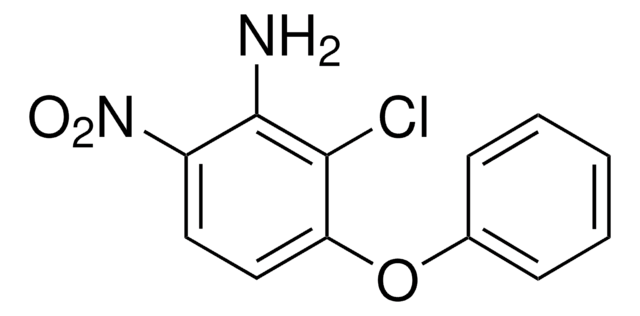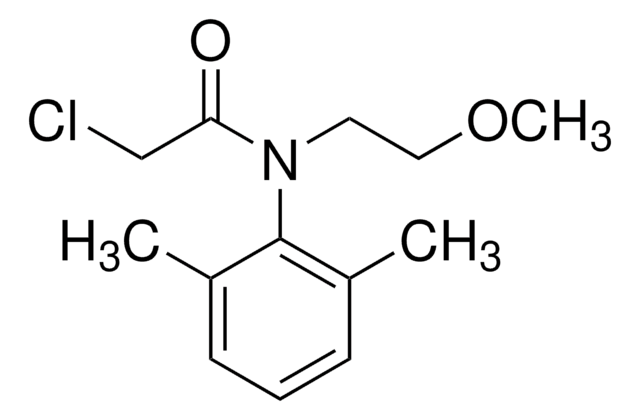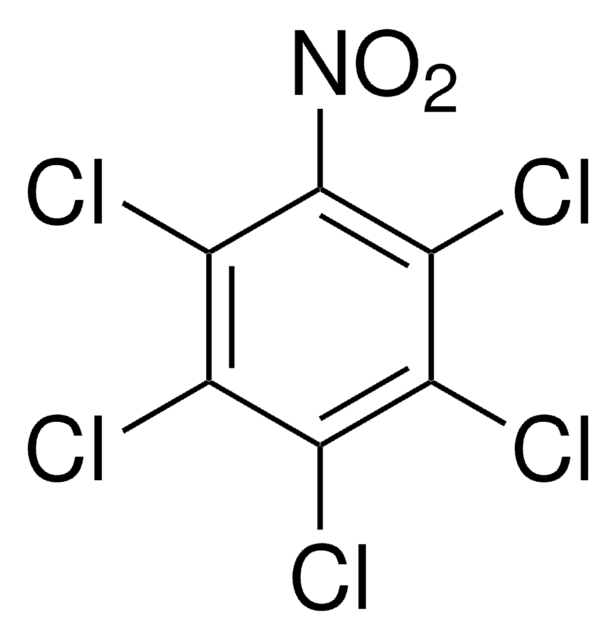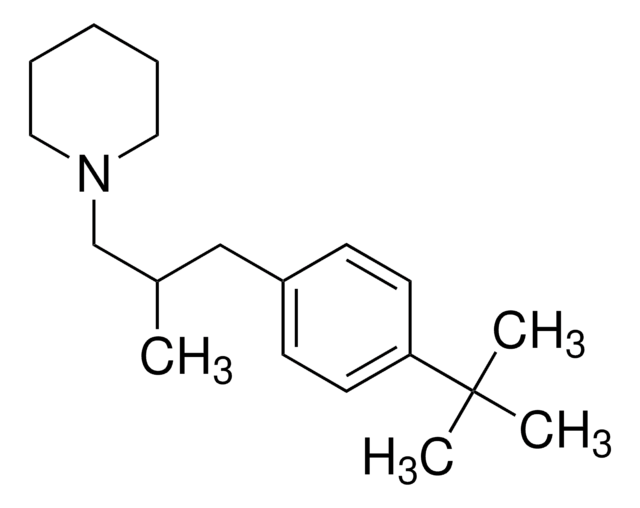All Photos(2)
About This Item
Empirical Formula (Hill Notation):
C11H21N5S
CAS Number:
Molecular Weight:
255.38
Beilstein:
528188
EC Number:
MDL number:
UNSPSC Code:
41116107
PubChem Substance ID:
NACRES:
NA.24
Recommended Products
grade
analytical standard
Quality Level
product line
PESTANAL®
shelf life
limited shelf life, expiry date on the label
technique(s)
HPLC: suitable
gas chromatography (GC): suitable
application(s)
agriculture
environmental
format
neat
SMILES string
CCNc1nc(NC(C)C(C)C)nc(SC)n1
InChI
1S/C11H21N5S/c1-6-12-9-14-10(13-8(4)7(2)3)16-11(15-9)17-5/h7-8H,6H2,1-5H3,(H2,12,13,14,15,16)
InChI key
IKYICRRUVNIHPP-UHFFFAOYSA-N
Looking for similar products? Visit Product Comparison Guide
Application
Refer to the product′s Certificate of Analysis for more information on a suitable instrument technique. Contact Technical Service for further support.
Legal Information
PESTANAL is a registered trademark of Merck KGaA, Darmstadt, Germany
Storage Class Code
11 - Combustible Solids
WGK
WGK 2
Flash Point(F)
Not applicable
Flash Point(C)
Not applicable
Personal Protective Equipment
dust mask type N95 (US), Eyeshields, Gloves
Choose from one of the most recent versions:
Already Own This Product?
Find documentation for the products that you have recently purchased in the Document Library.
Y Matsui et al.
Water science and technology : a journal of the International Association on Water Pollution Research, 51(3-4), 329-337 (2005-04-27)
In the prediction of time-series concentrations of herbicides in river water with diffuse-pollution hydrological models, farming schedules (the dates of herbicide application and drainage of irrigation water from rice paddies) greatly affect the runoff behavior of the herbicides. For large
Acute toxicity of pesticides to Gobius sp., Palaemonetes africanus, and Desmocaris trispimosa.
A G Ebere et al.
Bulletin of environmental contamination and toxicology, 49(4), 588-592 (1992-10-01)
Kunihiko Fujii et al.
Pest management science, 63(3), 254-260 (2007-01-25)
A novel bacterial strain FJ1117YT was isolated from an enrichment culture with the herbicide simetryn. The isolate was capable of degrading the herbicide supplied as the sole sulfur source in an aquatic batch culture. The strain FJ1117YT was identified as
Our team of scientists has experience in all areas of research including Life Science, Material Science, Chemical Synthesis, Chromatography, Analytical and many others.
Contact Technical Service








